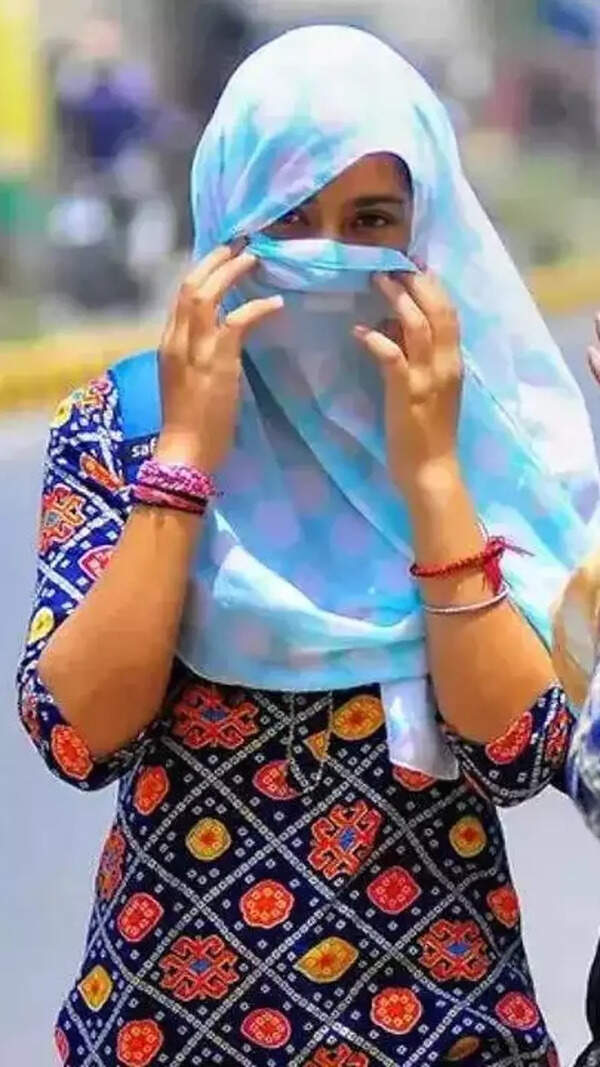- News
- City News
- nagpur News
- Aurangzeb army cannon fires talks of history distortion
Trending
Aurangzeb army cannon fires talks of history distortion

Nagpur: Amid the groundbreaking ceremony for a 51 feet statue of Maratha warrior king Chhatrapati Shivaji and controversies surrounding Aurangzeb, one of the relics belonging to the Mughal emperor adorns city’s Raj Bhavan (governor’s residence).
A seven-tonne cannon belonging to Aurangzeb’s army has been installed at the Raj Bhavan since British times and has attracted the interest of heritage enthusiasts as well as historians.

Present day Raj Bhavan, built in 1891, was the residence of the commissioner of erstwhile Central Provinces of which Nagpur was the capital. The artillery gun remains here since the modern days and continues to be one of the prized possessions of the Raj Bhavan.
The length of the barrel, from muzzle opening to the breech is 12 feet and its bore stands at 8.5 inches.
The British record further says that its caliber is somewhat larger, and the length much more than the British 68 pounder which was in service at that time.
The gun has Aurangzeb’s seal with his full title Abul Muzaffar Mohiyuddin Mohammed Aurangzeb Shah Ghazi. An inscription reads: “When the sparks of sorrow issue form me, life deserts the body as grief falls on the world when flames emerge from the fiery zone”. The gun could fire a cannon ball of 35 sers (old measure) with 12 sers of gunpowder. This equals nearly 43kg.
Historian Chandrashekhar Gupta says that the history cannot be erased. “Irrespective of the present-day controversies, relics like the cannon at Raj Bhavan are also part of the country’s past. Of course, it is not right to unduly glorify certain historical characters. For example, there are divergent views about Tipu Sultan with instances of excesses committed by him,” Gupta said.
Former director (epigraphy) at Archaeological Survey of India unit GS Khwaja said that if history has to be revisited it should not incite religious sentiments.
“The past itself shows that both the Marathas and Mughals had troops cutting across religious lines. The Mughal heritage, whether liked or not, cannot be erased from country history. It was also during the Mughal period that India had emerged as an economic superpower and a number of monuments that attract tourists are the gift of Mughals,” he said.
A seven-tonne cannon belonging to Aurangzeb’s army has been installed at the Raj Bhavan since British times and has attracted the interest of heritage enthusiasts as well as historians.

Present day Raj Bhavan, built in 1891, was the residence of the commissioner of erstwhile Central Provinces of which Nagpur was the capital. The artillery gun remains here since the modern days and continues to be one of the prized possessions of the Raj Bhavan.
The cannon is named ‘Mulk Haibat’, which means terror of the country. A British time note describing Mulk Haibat says that it is a magnificent specimen of native gun casting technique and was made in Burhanpur in 1663. It is made of a gunmetal containing a very large proportion of copper, probably ashtadhatu — a composition of eight metals including gold and silver.
The length of the barrel, from muzzle opening to the breech is 12 feet and its bore stands at 8.5 inches.
The British record further says that its caliber is somewhat larger, and the length much more than the British 68 pounder which was in service at that time.
The gun has Aurangzeb’s seal with his full title Abul Muzaffar Mohiyuddin Mohammed Aurangzeb Shah Ghazi. An inscription reads: “When the sparks of sorrow issue form me, life deserts the body as grief falls on the world when flames emerge from the fiery zone”. The gun could fire a cannon ball of 35 sers (old measure) with 12 sers of gunpowder. This equals nearly 43kg.
Historian Chandrashekhar Gupta says that the history cannot be erased. “Irrespective of the present-day controversies, relics like the cannon at Raj Bhavan are also part of the country’s past. Of course, it is not right to unduly glorify certain historical characters. For example, there are divergent views about Tipu Sultan with instances of excesses committed by him,” Gupta said.
Former director (epigraphy) at Archaeological Survey of India unit GS Khwaja said that if history has to be revisited it should not incite religious sentiments.
“The past itself shows that both the Marathas and Mughals had troops cutting across religious lines. The Mughal heritage, whether liked or not, cannot be erased from country history. It was also during the Mughal period that India had emerged as an economic superpower and a number of monuments that attract tourists are the gift of Mughals,” he said.
Start a Conversation
FOLLOW US ON SOCIAL MEDIA
FacebookTwitterInstagramKOO APPYOUTUBE










